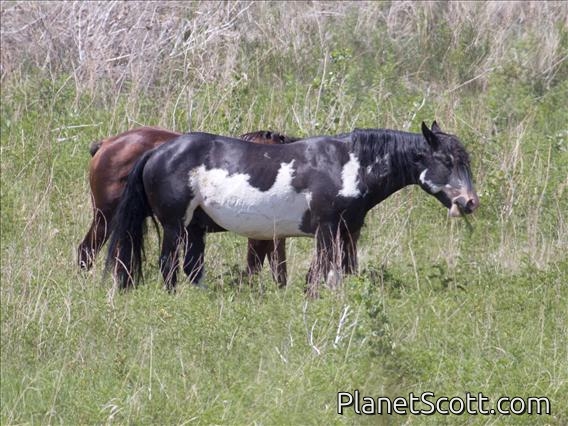Horse (Equus caballus)


About Horse (Equus caballus)
- Kingdom: Animals
- Phylum: Chordates
- Class: Mammals
- Order: Perissodactyla
- Family: Equidae
The horse is a domesticated, one-toed, hoofed mammal. It belongs to the taxonomic family Equidae and is one of two extant subspecies of Equus ferus. The horse has evolved over the past 45 to 55 million years from a small multi-toed creature, Eohippus, into the large, single-toed animal of today. Humans began domesticating horses around 4000 BCE in Central Asia, and their domestication is believed to have been widespread by 3000 BCE. Horses in the subspecies caballus are domesticated, although some domesticated populations live in the wild as feral horses. These feral populations are not true wild horses, which are horses that have never been domesticated. There is an extensive, specialized vocabulary used to describe equine-related concepts, covering everything from anatomy to life stages, size, colors, markings, breeds, locomotion, and behavior.
Source: Wikipedia
Lifelists
Trips
Visits
-
2006-12-07
Isla Isabella - Highlands, Ecuador -
2008-02-17
San Jose del Cabo - Estuary, MexicoGrazing in the estuary and giving rides to tourists when required. -
2009-03-09
Cana Station, PanamaA few horses around the station are used to carry stuff. -
2010-02-16
El Rosario, Mexico -
2011-01-04
Lake Langano - Bishangari Forest, EthiopiaA few kept around for tourists to ride. -
2011-07-15
Pantanal, Brazil -
2012-07-11
Theodore Roosevelt National Park - South Unit, United States of AmericaFeral horses in the campground.

